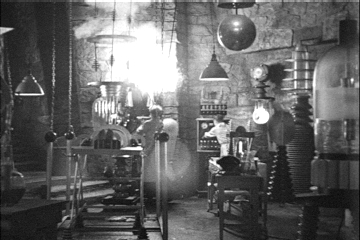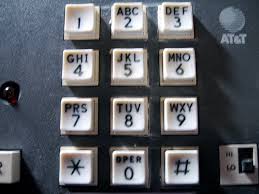

Copyright © Cay S. Horstmann 2015 
This work is licensed under a Creative Commons Attribution 4.0 International License
defval to define functions
val triple = (x: Double) => 3 * x
def triple(x: Double) = 3 * x
def isn't followed by =, you are defining a function returning ()
def triple(x: Double) { 3 * x } // Returns ()!
def fac(n: Int):Int = ...
def sumInts(a: Int, b: Int): Int = a.to(b).reduce(_+_)
def square(x: Int): Int = x * x def sumSquares(a: Int, b: Int): Int = a.to(b).map(square).reduce(_+_)
def cube(x: Int): Int = x * x * x def sumCubes(a: Int, b: Int): Int = a.to(b).map(cube).reduce(_+_)
def sum(f: Int => Int, a: Int, b: Int): Int = a.to(b).map(f).reduce(_+_)
def sumInts(a: Int, b: Int) = sum(id, a, b) def sumSquares(a: Int, b: Int) = sum(squares, a, b) def sumCubes(a: Int, b: Int) = sum(cube, a, b)
def id(x: Int): Int = x def square(x: Int): Int = x * x def cube(x: Int): Int = x * x * x
def sum(f: Int => Int): (Int, Int) => Int = (a: Int, b: Int) =>a.to(b).map(f).reduce(_+_)
sum(square)(1,4)
sum must be a paire of IntssumSquares(1,4)def sumInts = sum(id) def sumSquares = sum(square)
def sumCubes = sum(cube)
sumCubes(1, 10) + sumSquares(10, 20)
sum (cube) (1, 10)
sum(cube)(1, 10) == (sum (cube)) (1, 10)
Seq[A].corresponds(t: Seq[B])(p: (A, B) => Boolean) checks whether two sequences have “corresponding” elements, as defined by pval s = "Mary had a little lamb".split(" ")
val t = Array(4, 3, 1, 6, 4)
s.corresponds(t)((a: String, b: Int) => a.length == b)
s.corresponds(t)(_.length == _)
s.corresponds(t)(_.length == _)
t is needed to infer the type BVector(a, b, c) is
a * b * c = 1 * a * b * c = ((1 * a) * b) * c
foldLeft:
def prod(lst: Vector[Int]) = lst.foldLeft(1) (_ * _)
*
/ \
* c
/ \
* b
/ \
1 a
foldRight operator works right-to-left: a * (b * (c * 1))
1.to(10).foldLeft("")(_ + _)
"12345678910""10987654321"reducereduce only works with operators (A, A) => AfoldLeft works with any operator (B, A) => Baugment(augment(augment(Vector(Vector("1")), '2'), '3'), '4')
reduce because augment takes arguments of different types
val augment = (a: Vector[Vector[String]], t: Char) => ...
foldLeft—see lab`f(n) = {(s , if n = 0),(t(f(n - 1), n) , if n > 0):}`
can be computed with a fold.1.to(n).foldLeft(s)(t)
`n! = {(1 , if n = 0),((n - 1)! * n , if n > 0):}`
`S(n) = {({} , if n = 0),(S(n - 1) ∪ { s ∪ {n} | s ∈ S(n - 1) } , if n > 0):}`
"Mississippi" → Map(M -> 1, i -> 4, s -> 4, p -> 2) .
.
.
op
/ \
op 's'
/ \
op 'i'
/ \
empty map 'M'
op?
(m, c) => m + (c -> (m.getOrElse(c, 0) + 1))

def max(lst : Seq[String], less : (String, String) => Boolean) = lst.reduce((x, y) => if (less(x, y)) y else x)
Make a call to max that yields the longest string in a sequence of strings. Important: Use _ for the string parameters in your less function.
def max[T](lst : Seq[T], less : (T, T) => Boolean) =
lst.reduce((x, y) => if (less(x, y)) y else x)
What happens when you call max(lst, _ < _)?
max[T] function, exactly like mul2 above. What is the code for your revised function? What happens when you call max2(lst)(_ < _)? _ parameters?val fac = (n: Int) => ...
subsets(2) to be Vector(Vector(), Vector(1), Vector(2), Vector(1, 2)). How do you get that out of subsets(1), i.e. Vector(Vector(), Vector(1))?s and an integer n, and you want s together with the sequence obtained by adding n to all elements of s. Write a function that does that, and test it.subsets by using foldLeft.subsets as a recursive function. Try it!letterFrequencies function from the slide 12. What do you get for letterFrequencies("Mississippi")?
augment to get all ways of breaking up a string into substrings. For example, here are all substrings of "1234"
augment(augment(augment(Vector(Vector("1")), '2'), '3'), '4') Get last week's worksheet from your buddy and copy over all you need to today's worksheet.
"1234". Of course, we want to use foldLeft with augment. What is the seed value? And to what sequence do you apply foldLeft?val substrings = (s: String) => .... What is substrings("2728")?Vector[String]. The shining achievement of last week's lab was the function wordsForDigitSequence that found all words for such a sequence. What do you get when you call
substrings("2728").map(wordsForDigitsSequence)
val phoneMnemonics = (digits: String) => ... that does this for any string of digits, not just "2728". What is phoneMnemonics("7225247386")? (You can change the cutoff limit of the worksheet in the preferences to see all solutions.)